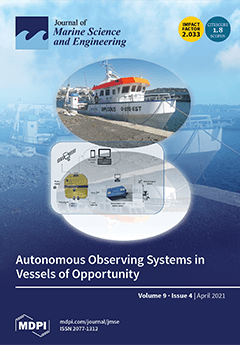The aim of this specific study is to present a new weighted Coastal Vulnerability Index (CVI
WF), with an emphasis given to the geotechnical evaluation and shoreline evolution rate measured through high-resolution remote sensing, which seem to be the most interfering variables
[...] Read more.
The aim of this specific study is to present a new weighted Coastal Vulnerability Index (CVI
WF), with an emphasis given to the geotechnical evaluation and shoreline evolution rate measured through high-resolution remote sensing, which seem to be the most interfering variables in CVI calculations. As a pilot area for the application of the new CVI
WF, the Gulf of Patras in Western Greece was selected, which is suffering erosion problems due to climate change, the sea level rising and human intervention. The new CVI
WF, which was applied in this research, includes the following innovations: (1) the use of geotechnical characterization instead of geological–geomorphological characterization, (2) the use of high-resolution remote sensing data for the detection of shoreline evolution rate and (3) the insertion of a specific weighted geotechnical factor in the CVI
WF formula. The results from the application of the unweighted CVI show that percentages of 20.13%, 20.47%, 24.56%, 29.39% and 5.45% of the gulf’s shoreline are under the regime of very low, low, moderate, high and very high vulnerability, respectively. On the other hand, the corresponding results from the application of the weighted CVI
WF show a percentage of 14.59%, 25.91%, 20.04, 36.48% and 2.98, respectively.
Full article





